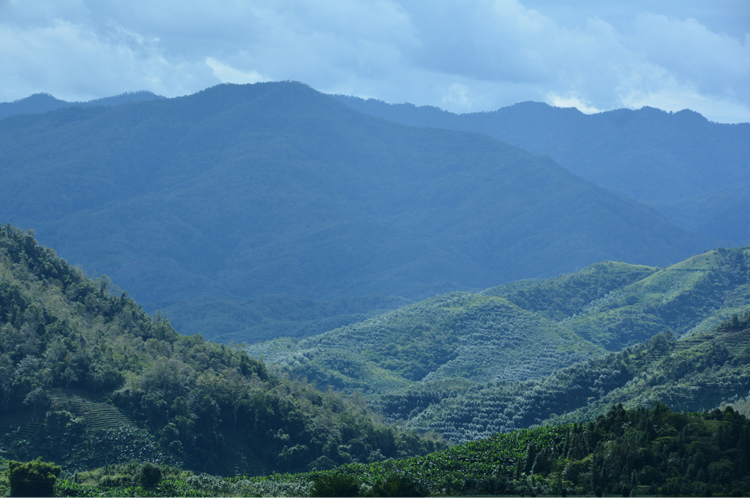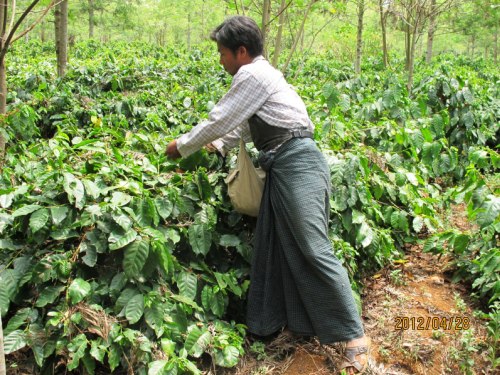Why do most people like coffee beans with high altitude in SHB?

Ideal condition
Most people think that tropical coffee is native and ideal for hot and humid environments-but this is not always the case. The best coffee actually comes from cooler, milder environments in the higher mountains of the tropics. The best conditions for growing coffee include abundant rainfall, an average annual temperature of about 70 degrees Fahrenheit , well drained, nutrient-rich soil-elements that can be found at all altitudes. Coffee is cultivated at all heights from sea level to frost.

Reduce the growth height (not used by BPR)
The lower altitude pushes the ideal growth conditions to the limit. In this hot and humid environment, due to excessive rainfall throughout the year, coffee trees almost endlessly produce fruit, there is no specific season, because higher temperatures tend to accelerate ripening. Due to the excessive decay of fruit, the response of natural coffee trees is to produce too much fruit to overwhelm adverse conditions, allowing a small number of seeds to enter the next growing season. As a result, these coffees end up with a SCAA cupping score of less than 85, high acidity, poor mouthfill, tend to have a higher taste of a hard bite (either in the front or back cup), as well as in the higher caffeine, which is generally quite undesirable. However,

High altitude
Higher mountain elevations are significantly different by extending the growth conditions to the other extreme. The rainfall is limited, and the temperature at these heights is much lower, making the beans mature gradually and develop more flavor essence. The cold night at this altitude does slow plant growth. These rugged mountain areas tend to have thinner soil, possibly volcanoes, no rich soil, and insufficient nutritional support for coffee trees. In response to these situations, trees produce only one small tree a year, an average of one pound per tree. Reward, every bean is full of precious oil and coffee flavor. These coffees are often not very rich because of their low yield. However, their scarcity, coupled with the special attention needed for planting, makes these real pecan or special hard bean (SHB) coffee more expensive and special than mass-produced commercial varieties. The flavor processed from these extreme conditions is worth all the hard work pushing BPR to focus on these unique and intense flavor profiles.
Important Notice :
前街咖啡 FrontStreet Coffee has moved to new addredd:
FrontStreet Coffee Address: 315,Donghua East Road,GuangZhou
Tel:020 38364473
- Prev

The decline and rise of the coffee economy in Zimbabwe the coffee industry in Zimbabwe is slowly recovering
[photo: Shutterstock] Zimbabwe, a small country about the size of California, is home to some of Africa's richest coffee belts. Here, the conditions for growing coffee beans are perfect: high mountains, lush valleys and a cool climate. This country was once famous for its SHQ coffee, which slowly dries and tastes.
- Next

The difference between high-altitude coffee trees and high-altitude coffee trees why high-altitude coffee bears very slow and less fruit
Ideal conditions most people think that tropical coffee is native and ideal for hot and humid environments-but this is not always the case. The best coffee actually comes from cooler, milder environments in the higher mountains of the tropics. The most suitable conditions for coffee cultivation include abundant rainfall, an average annual temperature of about 70 degrees Fahrenheit, good drainage and nutritious soil.
Related
- Beginners will see the "Coffee pull flower" guide!
- What is the difference between ice blog purified milk and ordinary milk coffee?
- Why is the Philippines the largest producer of crops in Liberia?
- For coffee extraction, should the fine powder be retained?
- How does extracted espresso fill pressed powder? How much strength does it take to press the powder?
- How to make jasmine cold extract coffee? Is the jasmine + latte good?
- Will this little toy really make the coffee taste better? How does Lily Drip affect coffee extraction?
- Will the action of slapping the filter cup also affect coffee extraction?
- What's the difference between powder-to-water ratio and powder-to-liquid ratio?
- What is the Ethiopian local species? What does it have to do with Heirloom native species?

